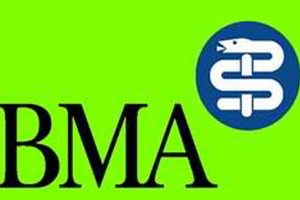 The British Medical Association (BMA) (in French: British Medical Association), is a professional association and an official Union of physicians of the United Kingdom. This association is not qualified for regulation or certification of physicians, missions which are devolved to the General Medical Council. The association has its headquarters at the House of the BMA (BMA House), located Tavistock Square in London. It also has national Cardiff, Belfast and Edinburgh offices, a European Office in Brussels and several regional offices in England.
The British Medical Association (BMA) (in French: British Medical Association), is a professional association and an official Union of physicians of the United Kingdom. This association is not qualified for regulation or certification of physicians, missions which are devolved to the General Medical Council. The association has its headquarters at the House of the BMA (BMA House), located Tavistock Square in London. It also has national Cardiff, Belfast and Edinburgh offices, a European Office in Brussels and several regional offices in England.
The BMA includes various representative and scientific committees. It is recognized by employers in the National Health Service as the only forum empowered to negotiate contracts for physicians. The purpose of the BMA is to “promote the medical and related sciences and ensuring that the honour and interests of the medical profession” (“to promote the medical and allied sciences, and to maintain the honour and interests of the medical profession”.)
History
The British Medical Association is founded on 19 July 1832, under the name of “Provincial Association of physicians and surgeons” Provincial Medical and Surgical Association (PMSA) by Sir Charles Hastings (1794-1866), at a meeting in the room of the Council of the Royal Infirmary of Worcester (Worcester Royal Infirmary) which houses since September 1970 one of the campus (city campus)(, City campus) of the University of Worcester. A hearing of 50 doctors attended the proposal launched by Hastings to create a both friendly and scientific association devoted to the sharing of knowledge among doctors. Ten years later, the staff Association are 1350 members and it launches a weekly newspaper, The Provincial Medical and Surgical Journal, which became from 1857 the British Medical Journal (BMJ). The association grew quickly and in 1853, the MAWP opens London doctors to become, in 1856, the British Medical Association. Medical students are allowed since the end of the 1970s.
While its original purpose was not a reformer, the BMA played a key role in the preparation and adoption of the medical act of 1858 (Medical Act) 1858. It creates the General Medical Council and establishes standards of qualification of physicians and a licensing system. Previously, anyone, regardless of their qualification, was free to practise medicine. This prompted the BMA to then play an important role in the medical policy, with campaigns on medical practice under the Act on the poor (Poor law), quackery, public health, alternative medicine, military medicine, and contractual practice. An internal organization to the Association is particularly active during this period, the commission parliamentary Bills (Parliamentary Bills Committee), formed in 1863 and that will influence the legislation on public health issues.
Seat
Since 1925, the headquarters of the BMA is the BMA House in Tavistock Square, London. Before this date the association was no. 429 on the Strand since his move to London. The building, now listed grade II, was originally designed for the Theosophical Society by Sir Edwin Lutyens and its construction began on 3 September 1911. It had been interrupted by the beginning of the first world war and the unfinished building was requisitioned by the army pay Office. After the war, the Theosophical Society no longer has the means to complete the construction, the building is sold to the BMA for the sum of £ 50,000. Is that much later, in 1962, that the association acquires full ownership of the site in the areas of Bedford.
After the purchase of the building, the BMA commissioned Lutyens to complete construction as its first project. The building is officially opened by King George V and Queen Mary, on 13 May 1925. Soon after, plans of extension of the building on Tavistock Square are ordered from Cyril Wontner Smith. It is then to Douglas Wood that the association request to add two wings further and part of the main entrance (constructed from 1938 to 1950) and a different extension on the back of the building (built in 1959-1960).























